One consistent question I receive regarding an African safari is how close do you get to the animals on safari?
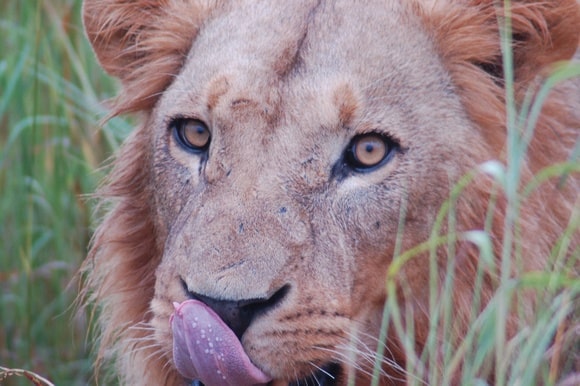
The first assumption when people see a photo like this lion face is wow, you must have a huge camera lens. Often times the lens is important to ‘reach’ your subject for a great photo but it is also common to have many very close sightings on an average safari. In the case of our lion we were only ten feet away to a pair of relaxed lions.
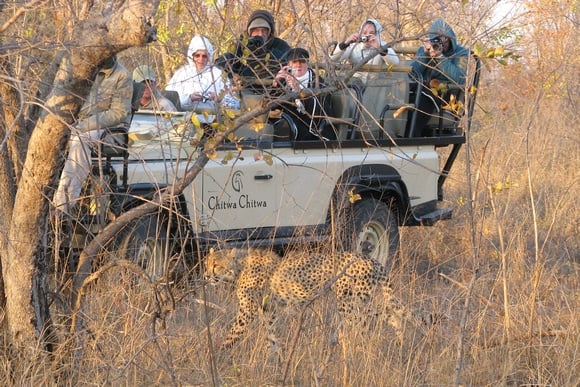
This cheetah photo was just sent to me by clients, John and Erin of Pittsburgh, PA who recently went on a honeymoon safari to Chitwa Chitwa in the Sabi Sand Game Reserve in South Africa. How close you will be to animals depends on many factors and the two most important are probably the level of habituation and the ability to game drive off road. In areas like the Sabi Sand Game Reserve there is a lot of safari activity with vehicles from numerous camps traversing the area on a daily basis, as a result many of the animals have become completely accustomed to safari vehicles and formed a habituation where they will largely just ignore the presence of tourists on a game drive. In the Sabi Sand even more stealthy species like leopards are extremely relaxed in the presence of vehicles. Conversely, in a place like the Selous Game Reserve animals are often described as skittish and close approach and prolonged observation is much more difficult. The Selous is an enormous area, the largest game reserve in all of Africa, and tourist density is very low so animals do not necessarily encounter tourism daily. Photo tourism also takes place in only a small percentage of the reserve while hunting takes place throughout most of the reserve. This likely contributes to keeping animals less habituated as well. Expectations of close viewing should differ greatly between these two locations and some clients have a strong preference for plentiful close sightings while others prefer the feel that a more remote, wild setting brings even if you have to be more patient for your sightings. It’s good to consider what your style is and seek advice to find the right locations. Being able to drive off road is essential if you want the ability to approach closely. Inside of parks where you are restricted to the roads it is not uncommon to still have many good, close up sightings but your guide has little control over approach and angles for photography when restricted to roads. This is the real value of being able to go off road, not merely the ability for close approach but the ability to position for photography and to observe behavior. Most importantly, key behavior such as hunting will not be restricted to one location and having the freedom to follow where an animal goes opens up the ability to better observe behavior.
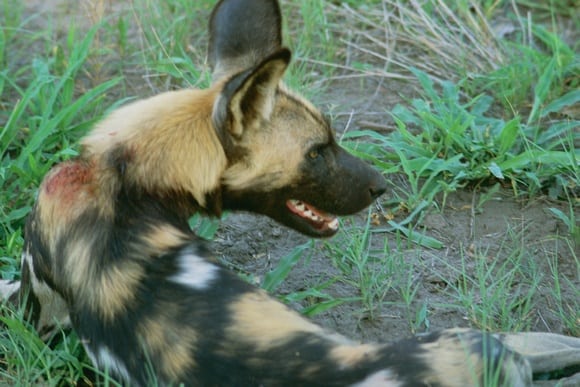
After eating, an African wild dog rest in the shade of the vehicle just 3 feet below me
Reading Animals
Back to our original question, how close will the animals be on safari? A good guide will ‘read’ the animals by interpreting their behavior to determine how close to approach. If an animals changes it’s behavior due to the vehicle than the approach has been made too close, normally in such a case the animal will simply move away and return to it’s relaxed behavior. The guide can determine if an animal is relaxed based on behavioral cues and watching signs like tail position, ear position, facial expression etc., that are specific for each individual species. Often the guide will be familiar with individual animals and have a feel for the animals comfort levels but even in this case, just like people individual animals can feel and act differently one day to the next. Fortunately predator species often become habituated and very relaxed allowing for close approach and you may well find yourself within 25 feet of lions, hyenas, cheetahs, African wild dogs, and even leopards in some areas. Once parked they often approach the vehicle as in the cheetah photo and it’s not unusual to find these species directly next to you just outside the vehicle.
Breeding herds of elephants is one case where a guide must be careful to keep them relaxed. The next series of photos will demonstrate different elephant postures indicating their intentions that a guide must read to keep clients safe.
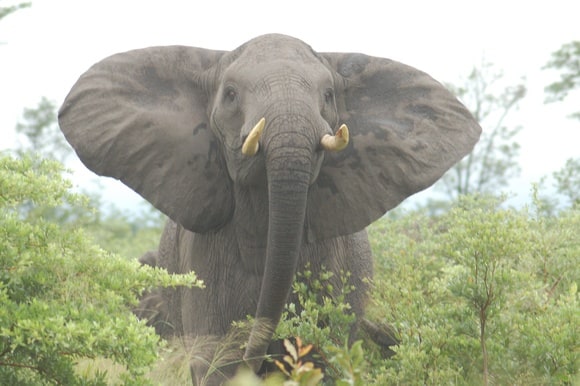
In this first picture the elephant is concerned for her family and adopts a threat posture to intimidate by looking as big as she can, fully spreading her ears, holding her head and shoulders high. This is a warning and a good time to increase distance so that she can relax.
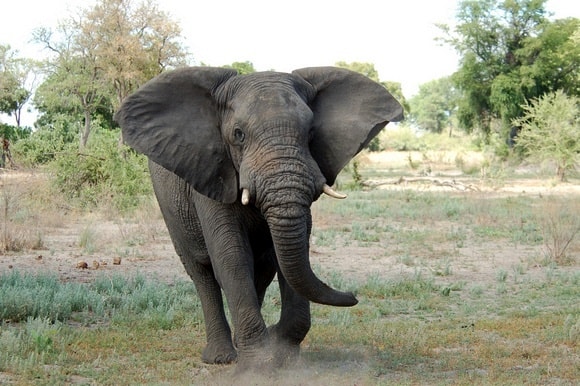
Elephants commonly mock charge to establish dominance and increase space by making you move. The ears are still relatively flared out and the trunk is out in front, often times trumpeting. If you don’t move often they will go back to what they were doing.
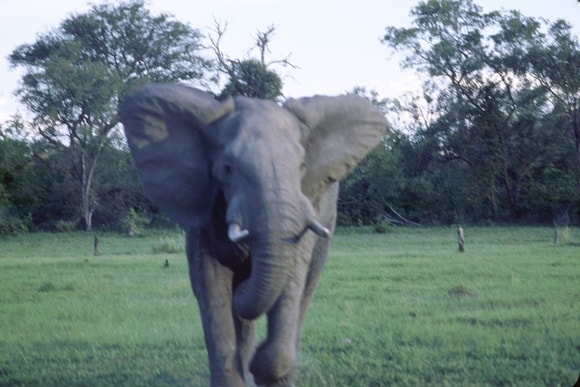
In a full charge the trunk is dropped and tucked between the front legs, ears are pulled in toward the body, the head and shoulders drop. This picture is blurred as we were driving away and as we had hit a comfortable distance the elephant is just stopping its charge so the head, shoulders, and trunk is beginning to come up. In this case the elephant finished with a big victory trumpet.
Remember virtually every guide would like to deliver the best experience for you and they will want to approach as closely as they can but need to both maintain your safety and work not to disturb and interfere with the animals. Thus, be patient and trust the guide and resist the temptation to pressure the guide. If you want a different photo angle or try another approach it is appropriate to ask the guide if that would work o.k. but let the expert determine what is possible with the understanding that first and foremost while we are there to observe the animals we need to protect their well being. Following a well planned safari you will be very pleased with your close proximity to a diverse array of wildlife, it is really what separates an African safari from anything else.